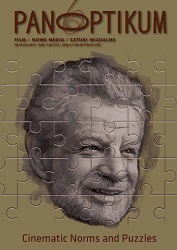Spiral, Slasher, and Sequel: Case of Happy Death Day (2017) and Happy Death Day 2U (2019)
Spiral, Slasher, and Sequel: Case of Happy Death Day (2017) and Happy Death Day 2U (2019)
Author(s): Radomir D. KokešSubject(s): Aesthetics, Film / Cinema / Cinematography
Published by: Uniwersytet Gdański
Keywords: Cinematography; “Happy Death Day”; “Happy Death Day 2U”; storytelling pattern; aesthetics;
Summary/Abstract: This article focuses on the films Happy Death Day (2017) and Happy Death Day 2U (2019). Both handle the spiral narrative, which is recognised by the article as a specific storytelling pattern with a protagonist stuck in an iterative segment of space, time and causality – and this protagonist is not only fully aware of this situation but also tries to deal with it. What for other unaware characters is a closed loop is for the protagonist an open experience with an odd number of turns of time spiral. The spiral narrative is known mostly from high-budget films such as Groundhog Day (1993) or Edge Of Tomorrow (2014). Nevertheless, as the article explains, it occurs in dozens of other theatrical films, VOD films, television films or television shows. However, what are the reasons why, when there is an extensive set of works to choose from, does the article take just the doublet of Happy Death Day films? (1) On their example, the article discusses the author’s general hypothesis about spiral narrative works as a series of applications of the innovative narrative schema as an aesthetic tool. Such a hypothesis consists of three broader dimensions: (a) the aesthetic dimension, i.e. the spiral schema as a part of the art work; (b) the creative dimension, i.e. the spiral schema as part of the problem-solution process of filmmaking; (c) the production dimension, i.e. the spiral schema as a part of the competition of audiovisual production. (2) An even more important reason, though, for selecting just these two films has been the fact that Happy Death Day 2U is a sequel of Happy Death Day. In the „post-classical era” of global franchises, sequels, prequels, remakes, reboots and transmedia storytellings, this does not seem to be exceptional. However, in the context of the spiral narrative, this is an unprecedented step that raises several questions the article asks.
Journal: Panoptikum
- Issue Year: 2019
- Issue No: 22 (29)
- Page Range: 128-143
- Page Count: 16
- Language: English

